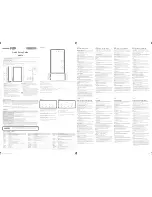
T A L K S W I T C H C O N F I G U R A T I O N
147
For example, assume an important client is calling. The system can ring the president when
Mode 1 is active during the day. If the president doesn’t answer, the call can be routed to
voicemail. A voice mailbox can immediately answer the call when Mode 2 is active at night or on
weekends. An auto attendant can immediately route the call to the president’s remote extension
during Holiday Mode.
1. Enter the
Group label
to name the group.
2. Select the
Mode
tab. Choices are
Mode 1
,
Mode 2
and
Holiday Mode
.
3. Set up the ring sequence. The ring sequence determines when each local extension will start
ringing. The extensions will not use their call cascades during the ring sequence. The system
transfers the call to the first extension that is answered.
a) Click
Edit
. The
Ring Sequence
window appears.
b) Select the local extensions to ring. All extensions are selected by default.
c) For each selected extension, set when the local extension will start ringing. All
extensions ring after the first ring by default.
If you assign a different value to each extension, the extension with the lowest number
of rings will ring first. The other extensions will start ringing as the number of rings
goes up. For example, the system can ring the receptionist first, and then ring other
users if the receptionist doesn’t answer.
d) Select the
Ring pattern
. Choices are
Regular
and
Alternate 1
to
Alternate 5
. This allows
you to set up distinctive ring based on the caller ID.
4. Set up call handling to route an unanswered call.
a) Select the call handling action. Choices are:
•
perform no action
— The system continues to ring the extensions. A generic auto
attendant answers after 15 rings. It allows an authorized caller to make
configuration changes, access voicemail or dial extensions.
•
go to auto attendant
— Plays the selected auto attendant.
•
play announcement
— Plays the selected announcement.
•
go to voicemail
— Accesses the selected voice mailbox.
















































